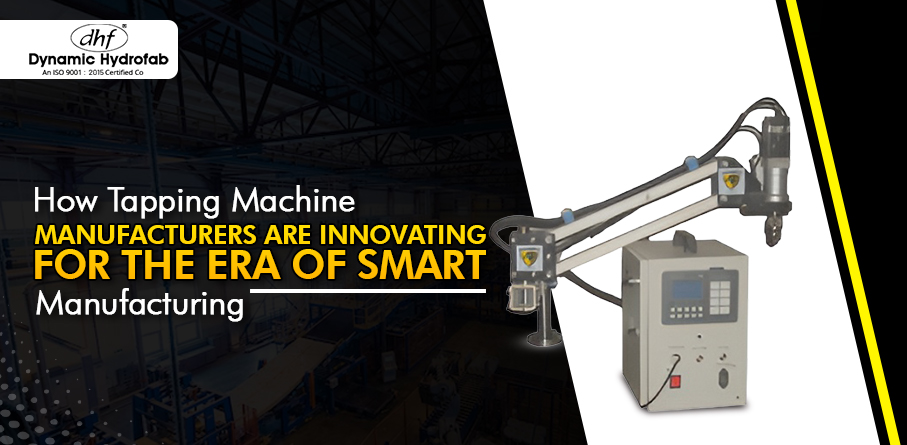- 195-B, Libaspur Road Samaypur, Delhi-110042

Smart manufacturing is changing how workplaces work, and companies that make tapping machines aren't going to be left behind. These days, how fast a Tapping Machine can tap threads isn't the only thing that makes it efficient. The whole process has to be accurate, automated, linked, and digitally manageable. As the need for precision parts in the automotive, aerospace, industrial machinery, consumer electronics, and energy equipment sectors grows, Dynamic Hydrofab’s Tapping Machine is being redesigned to meet Industry 4.0 requirements. The new focus is on better control, decision-making with sensor data, data-driven maintenance, and making machines easier for people to use.
In the past, Tapping Machine had fixed motion cycles. Smarter servo systems, dynamic torque tracking, and adaptive process correction are now built into modern high-end models. These tools don't just keep doing the same thing; they read sensor data and make calculated changes. This means fewer thread flaws, more accurate depths, and longer tool life. As companies become more precise, these technological improvements help maintain high quality even when batches differ.
Smart production is based on facts, not guesses. These days, tapping machines made by Tapping Machine Manufacturers can keep track of how many cycles they perform, how much vibration they experience, and changes in force. IoT modules and intelligent dashboards are being built into machines so operators and managers can monitor their health in real time. This helps identify strange trends early, before they lead to breakdowns. Predictive maintenance keeps machines running longer and reduces the cost of sudden downtime. For mass-production units, saving just a few minutes per cycle or tool change can add up to thousands of extra parts each year.
Less manual calibration is required with newer tapping tools from Dynamic Hydrofab because their controls are easier to use. Larger touchscreens, more straightforward menu navigation, and more visible parameter settings all make it possible to use machines with fewer highly skilled workers. This is a significant plus, as many fields are struggling to find qualified workers. It gets easier to train. Error chances go down. The workforce's productivity increases. This change also allows models for supervising more than one machine; from a central screen, one person can keep an eye on several tapping units.
Linked workstations make up smart workplaces. Tapping Machine Manufacturers now offer models that work well with robotic loading arms, belt transfer systems, and automatic tool-changing machines. The goal is to reduce the need to move things by hand. This lets production run continuously, and tapping is just one smart step in a whole chain of automated assembly. Integration helps keep output steady and reduces the risk of repetitive-handling injuries.
Tapping Machine Manufacturers are moving away from just selling hardware and toward providing smart manufacturing platforms. They meet the needs of Industry 4.0 by offering better control systems, data-driven maintenance, digital interfaces, and automated integration. The tapping segment will keep coming up with new ideas as businesses need more speed, reliability, and traceability. Dynamic Hydrofab’s Tapping machines will be used for more than just making threads in the future. They will also be used to make workplaces smarter, more connected, and more efficient.
Also Read:- Advantages of Using a Tapping Machine in Manufacturing
Also Read:- What Is a Tapping Machine? Working, Types & Applications
Leave a Comments